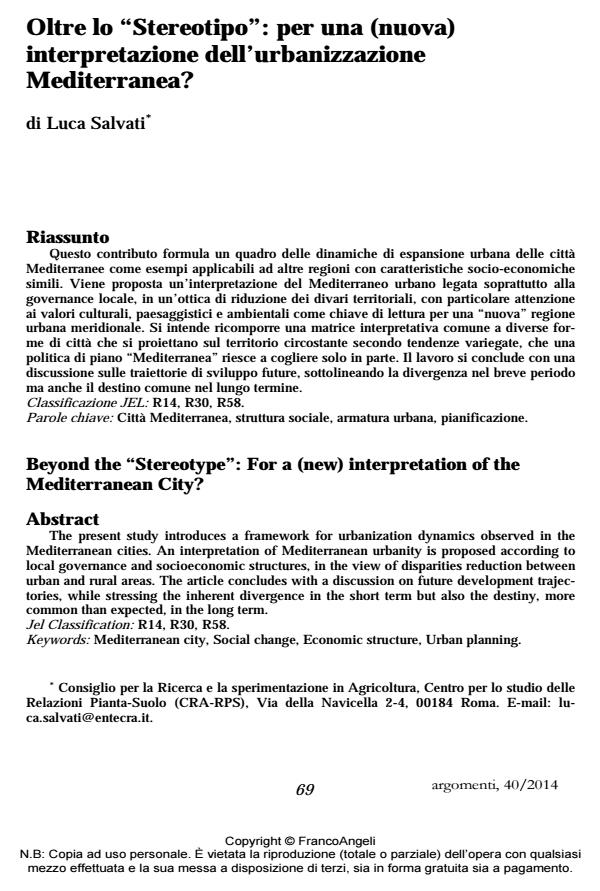Beyond the "Stereotype": For a (new) interpretation of the Mediterranean City?
Journal title ARGOMENTI
Author/s Luca Salvati
Publishing Year 2014 Issue 2014/40
Language Italian Pages 26 P. 69-94 File size 105 KB
DOI 10.3280/ARG2014-040004
DOI is like a bar code for intellectual property: to have more infomation
click here
Below, you can see the article first page
If you want to buy this article in PDF format, you can do it, following the instructions to buy download credits

FrancoAngeli is member of Publishers International Linking Association, Inc (PILA), a not-for-profit association which run the CrossRef service enabling links to and from online scholarly content.
The present study introduces a framework for urbanization dynamics observed in the Mediterranean cities. An interpretation of Mediterranean urbanity is proposed according to local governance and socioeconomic structures, in the view of disparities reduction between urban and rural areas. The article concludes with a discussion on future development trajectories, while stressing the inherent divergence in the short term but also the destiny, more common than expected, in the long term.
Keywords: Mediterranean city, Social change, Economic structure, Urban planning
Jel codes: R14, R30, R58.
Luca Salvati, Oltre lo "Stereotipo": per una (nuova) interpretazione dell’urbanizzazione Mediterranea? in "ARGOMENTI" 40/2014, pp 69-94, DOI: 10.3280/ARG2014-040004